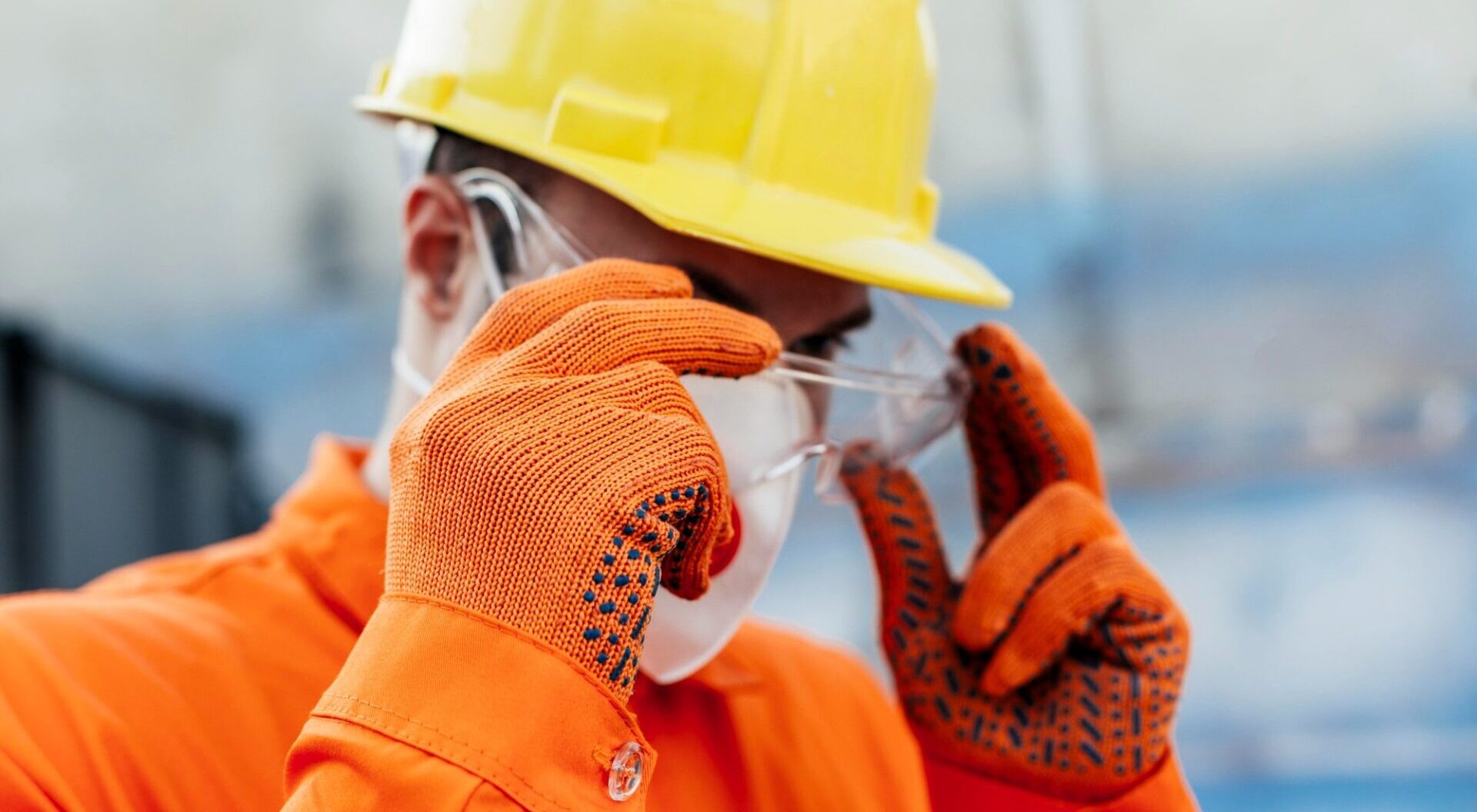
The recycling of fibres – what needs to be considered?

The recycling of fibres – what needs to be considered?
Fibre composites pass through the most diverse phases during their life cycle. Starting with production, through use to reprocessing in the context of recycling. And the question arises every time: are the fibres released in the process hazardous to health?
The World Health Organisation (WHO) classifies the toxicity of fibrous materials according to the geometry of the fibre material and its size. For a fibre to enter the respiratory tract, it must have a certain geometry. If fibres enter the bronchi, lungs or even alveoli, the biodegradability in the human body plays another decisive role. Fibres with a diameter of less than 3 µm and a fibre length greater than 5 µm as well as a length-to-diameter ratio of 3 to 1 are considered respirable and thus potentially hazardous to health [1], [2]. With the geometry described, there is a risk that the fibres align themselves along the airflow of the inhaled air. Consequently, they can penetrate deep into the lungs, right into the alveoli.
Release of fibres during mechanical treatment (demolition, cutting, grinding and drilling)
While there are no known health risks associated with glass-fibre reinforced plastics during mechanical treatment, the behaviour of carbon-fibre reinforced plastics depends heavily on the material properties of the carbon fibre used [3], [4]. For this reason, the construction industry is particularly committed to the use of mat- and bar-shaped reinforcements made of carbon fibre types that do not exhibit critical fracture behaviour. This ensures there is no health-relevant release of respirable and non-biodegradable fibre dusts during mechanical processing over the life cycle [5].
Irrespective of this, the mechanical treatment of carbon-fibre reinforced components changes the size and geometry of the fibres. As with other materials, dusts and fibre fragments are produced, which means that occupational health and safety measures analogous to those known and usually necessary in the construction and mechanical engineering sectors must be observed [6], [2].
Release of fibres during thermal treatment
For the moment, the thermal utilisation (incineration) of fibres containing carbon remains particularly challenging. Unlike fibres made of glass, for example, carbon-fibre reinforced components cannot simply be thermally recycled. In the case of improper thermal treatment, the fibres are incompletely burnt and merely reduced in size. In conventional incineration plants for household waste, for example, the temperature is not high enough for the carbon to burn. This can produce critical fibres according to the WHO definition [7].
Conclusion
Proper application of fibre-reinforced composites does not pose a health hazard to the user. This presupposes, for example, the same occupational health and safety requirements for handling carbon concrete as for conventional reinforced concrete. With regard to disposal, it is currently imperative to avoid uncontrolled thermal utilisation of materials containing carbon fibres. Therefore it is particularly important not to dispose of carbon fibre products with household waste.
As of 2021-03-25
List of references
[1] Park, S.-H. (2018). Types and health hazards of fibrous materials used as asbestos substitutes. Safety and Health at Work, 9(3), 360–364. https://doi.org/10.1016/j.shaw.2018.05.001
[2] Mattenklott, M., & Gelder, R. V. (2019). Carbonfasern und carbonfaserverstärkte Kunststoffe (CFK). In Gefahrstoffe – Reinhaltung der Luft, 79(9), 317-322. URL: https://www.dguv.de/medien/ifa/de/pub/grl/pdf/2019_124.pdf
[3] Bienkowski, N., Hillemann, L., Steibel, T., Kortmann, J., Kopf, F., Zimmermann, R., & Jehle, P. (2017). Bearbeitung von Carbonbeton – eine bauverfahrenstechnische und medizinische Betrachtung. In Bauingenieur, Jahresausgabe 2017/2018, Heft 10, 110-117.
[4] Westphal, G., Monsé, C., Walter, D., Brüning, T., & Bünger, J. (2019). Gefährdungsanalyse für Carbonfaser-verstärkte Kunststoffe. IPA-Journal, Nr. 1, 10-14. URL: https://www.ipa-dguv.de/medien/ipa/publikationen/ipa-journale/ipa-journale2019/documents/ipa_journal_1901_cfk.pdf
[5] C³ – Carbon Concrete Composite e. V. Vernetzungsworkshop »Selbstverpflichtung – eine Notwendigkeit mit Nutzen« im Jahr 2019 und die darauf aufbauenden Arbeitstreffen zur »Selbstverpflichtung zur Verhinderung von Gefährdungen durch biobeständige, lungengängige Faserstäube bei der Carbonbetonbauweise« im Jahr 2019 und 2020.
[6] Göhler, D., & Streibel, T. (2019). Exponierung von Zellkulturen mit Stäuben aus der Bearbeitung von Carbonbetonmaterialien. In C³ e. V., TUDALIT e. V. (Hrsg.), Tagungsband zu den 11. Carbon- und Textilbetontage am 24./25.09.2019 in Dresden, 116-117.
[7] Limburg, M., & Quicker, P. (2016). Entsorgung von Carbonfasern. In Thomé-Kozmiensky, K. J., & Beckmann, M. (Ed.), Energie aus Abfall 13, 135-144. URL: http://vivis.de/phocadownload/2016_eaa/2016_EaA_135-144_Quicker.pdf
About the partnership
Be part of the alliance and join us in facing the challenges with regard to the no longer avoidable handling of fiber composites. Let us together lead the region “Elbe Valley Saxony” into an economically resilient future.
